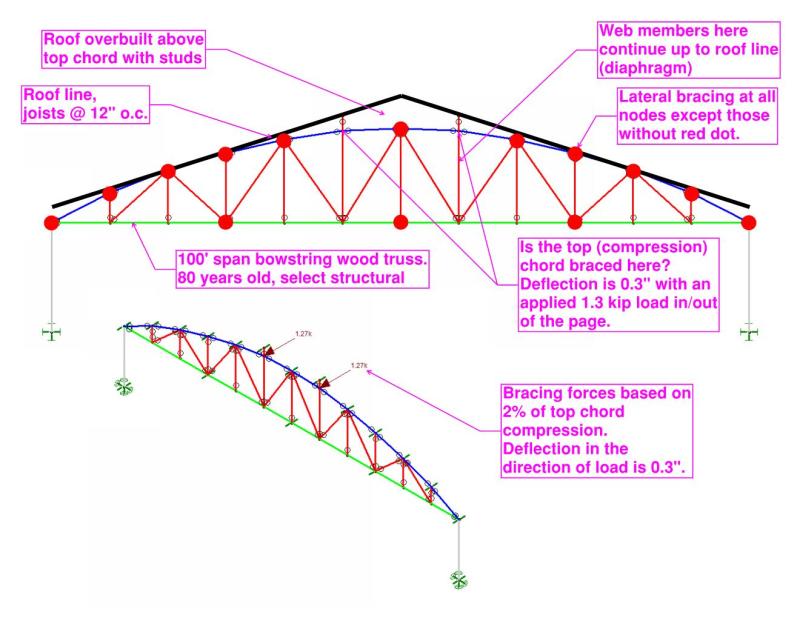DETstru
Structural
- Nov 4, 2009
- 395
I’m having an issue with an 80 year old wood bowstring truss. 100’ span. I had the wood graded as select structural. There are about 20 of these identical trusses in the building. See photo below.
I’m analyzing them for existing and new loads and have a problem with the top chord being partially unbraced. The roof is overbuilt above the arch to create a peak in the center of the building. Thus the rafters/joists do not frame directly into the top chord. I’m wondering if my top chord is truly unbraced for the +/-16 feet between two laterally braced points or if I can rely on the continuous web member for bracing. Note the bottom chord is braced at about 24 feet on center.
I decided to model the web members as they truly are, running through the top chord to the roof diaphragm. I applied a load equal to 2% of the compression in the top flange to that node. This was fine for strength but results in about 0.3” of lateral deflection. With this magnitude of deflection, can I consider the chord braced at that point (it doesn’t work otherwise) or do I need to add “real” bracing?
I’m not sure how to determine what stiffness is sufficient for proper bracing for wood compression members.

I’m analyzing them for existing and new loads and have a problem with the top chord being partially unbraced. The roof is overbuilt above the arch to create a peak in the center of the building. Thus the rafters/joists do not frame directly into the top chord. I’m wondering if my top chord is truly unbraced for the +/-16 feet between two laterally braced points or if I can rely on the continuous web member for bracing. Note the bottom chord is braced at about 24 feet on center.
I decided to model the web members as they truly are, running through the top chord to the roof diaphragm. I applied a load equal to 2% of the compression in the top flange to that node. This was fine for strength but results in about 0.3” of lateral deflection. With this magnitude of deflection, can I consider the chord braced at that point (it doesn’t work otherwise) or do I need to add “real” bracing?
I’m not sure how to determine what stiffness is sufficient for proper bracing for wood compression members.

